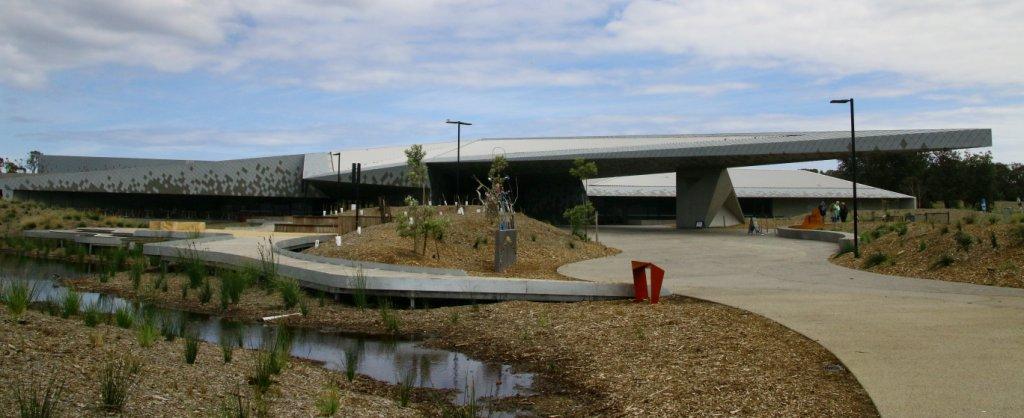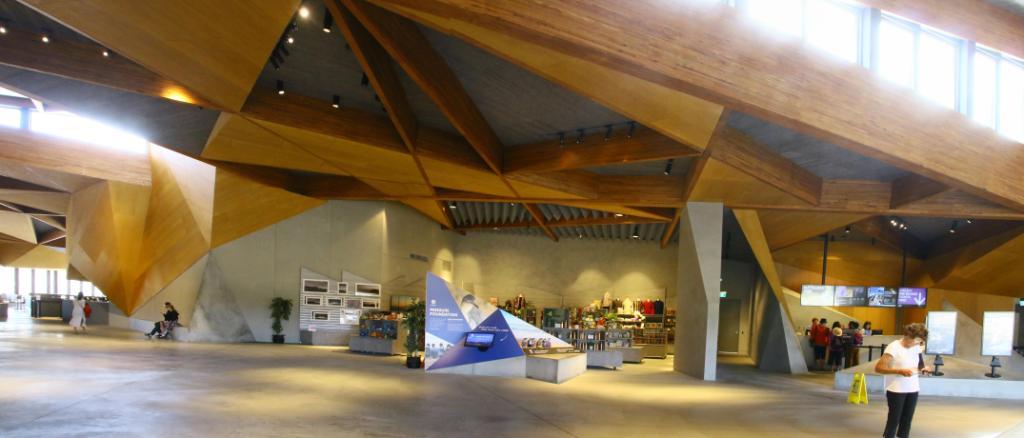
| Vol 69 | Page 15 |
Privacy Policy | Editorial Policy | Profit Policy | Join the Association | List of Members | Contact us | Index | Links
Back Go to page: 1 2 3 4 5 6 7 8 9 10 11 12 13 14 15 16 17 18 19 20 Forward
Contents:
National Vietnam Vets Museum, Phillip
Island.
Back in 2014 we had a
story on the Museum and as it’s been some time since we had a look
through it, while in Melbourne we decided to check it out again.
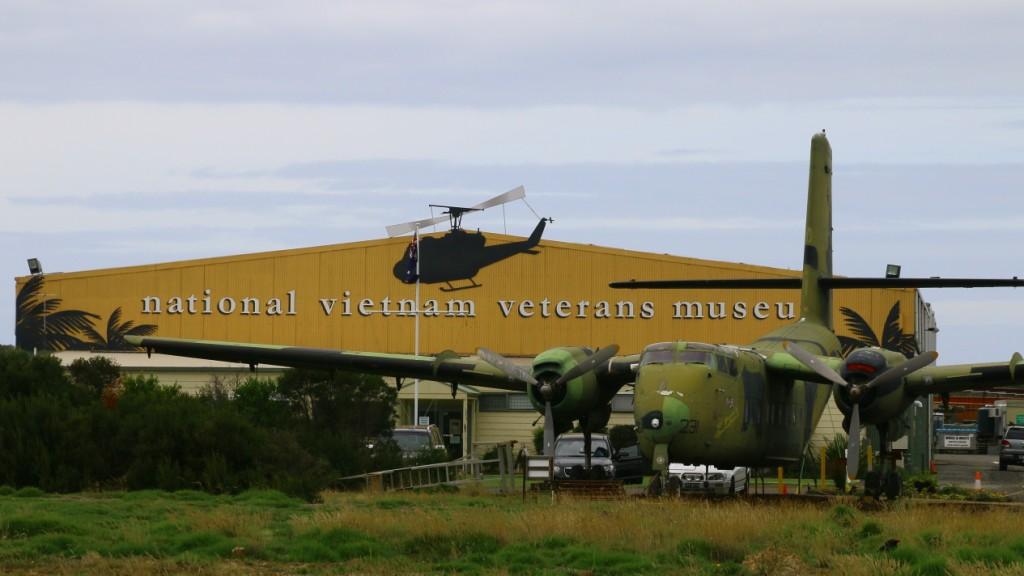
The museum is an easy 1¾ hours drive south of
Melbourne, on Phillip Island and if you’ve never been, you should.
Phillip Island has a lot to offer, you can spend about 2½ to 3 hours in
the Museum then rest of the day looking over the island itself.
Back in 2014 we were shown over the exhibits by
Gary “Gus” Parker (right), one of the instigators of the Museum and a
bloke we’d known for quite awhile but sadly Gary is no longer with us, having fought the big fight but
unfortunately lost the battle with the dreaded cancer.
We noticed quite a few changes since our last
visit, the outside of the building has had a complete revamp, exhibits
have been added and a lot of the exhibits inside have been worked on and
tarted up.
A sign on the wall at the entrance gives a
description of the origin of the museum, it says:
The National Vietnam
Veterans Museum (NVVM) was originally founded by Vietnam veterans to
help and support veterans to cope better with their experiences during
the Vietnam War and after their return to Australia.
The NVVM is dedicated
to veterans of Australia’s longest war, the Vietnam War, from 1962 to
1975.
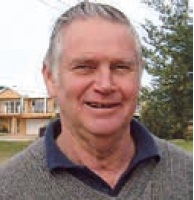 Rover and display trailer full of his personal memorabilia as an
embryonic mobile museum. Fuel was funded by the Department of Veterans
Affairs (DVA) to help “Vet Connect” reach out to many veterans who had
“gone bush” and to make them aware that the Vietnam Veterans Association
of Australia (VVAA) had been formed to lobby for recognition and
improved welfare and conditions for all veterans affected by the war.
Rover and display trailer full of his personal memorabilia as an
embryonic mobile museum. Fuel was funded by the Department of Veterans
Affairs (DVA) to help “Vet Connect” reach out to many veterans who had
“gone bush” and to make them aware that the Vietnam Veterans Association
of Australia (VVAA) had been formed to lobby for recognition and
improved welfare and conditions for all veterans affected by the war.
A growing collection
of memorabilia, images and stories were contributed to the trailer both
during and following this tour. When the Methvens retired to San Remo,
next to Phillip Island, a garage was arranged in March 1998 and this
became the first Vietnam Veterans Museum, open to the public. Donations
continued to arrive, space became an issue and the collection moved to a
new space in 1999 which had previously been five shops.
The museum was run and
manned by volunteers and came under the auspices of the Patriotic Trust
Fund (set up after the Second World War by the Victorian Government). By
late 2003, the museum was forced to re-locate once again and with the
concurrence of the VVAA, 1¼ acres of land was purchased next to the
Phillip Island airstrip.
member was the Methven’s pet dog, “Jack”.
Two committees were established, one for the sub-branch welfare
and pension obligations and one to focus on the museum for business
planning and fundraising.
The first major grant
was $30,000 from the DVA. Then the Vietnamese community raised $20,000.
Most funds for the museum development come from the veteran
community, through donations from VVAA sub-branches, RSLs and
individuals who purchased either a family or individual “brick” as part
of the museum’s “Buy-a-Brick” campaign. The Victorian Vietnam Veterans
Motorcycle Club and Royal Australian Army Service Corps (RAASC) also
raised nearly $20,000. A joint application with the Bass Coast Shire to
the Regional Development Victoria’s Small Towns Development Fund raised
$250,000, along with a Federal grant for $58,500 from the Regional
Partnerships Program.
The San Remo Museum
site was closed on the 15th November, 2006, relocated to the
new permanent Phillip Island site and re-opened on the 15th
December, 2006. On the 9th March 2007, the new National
Vietnam Veterans Museum was opened by the Premier of Victoria, Mr Steve
Bracks MP in front of about 2,000 veterans, families and dignitaries.
The National Vietnam Veterans Museum vision had been achieved.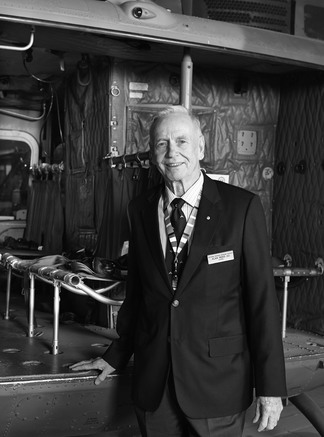
The first CEO was Gary
Parker and the first Chairman of the Board was John Methven OAM, the
museum founder, The Board also appointed, as first patron of the museum,
Air Vice Marshall Alan Reed, AO (right). All three were Vietnam
Veterans.
The NVVM remains the
spiritual home for Vietnam veterans and protects and preserves their
legacy and heritage arising from their participation in the Vietnam War.
Today, the National Vietnam Veterans Museum seeks to remember, interpret
and relate the experience of the veterans of the Vietnam era and the
enduring impact of the war on society.
I like long
walks, especially when they are taken by people who annoy me.
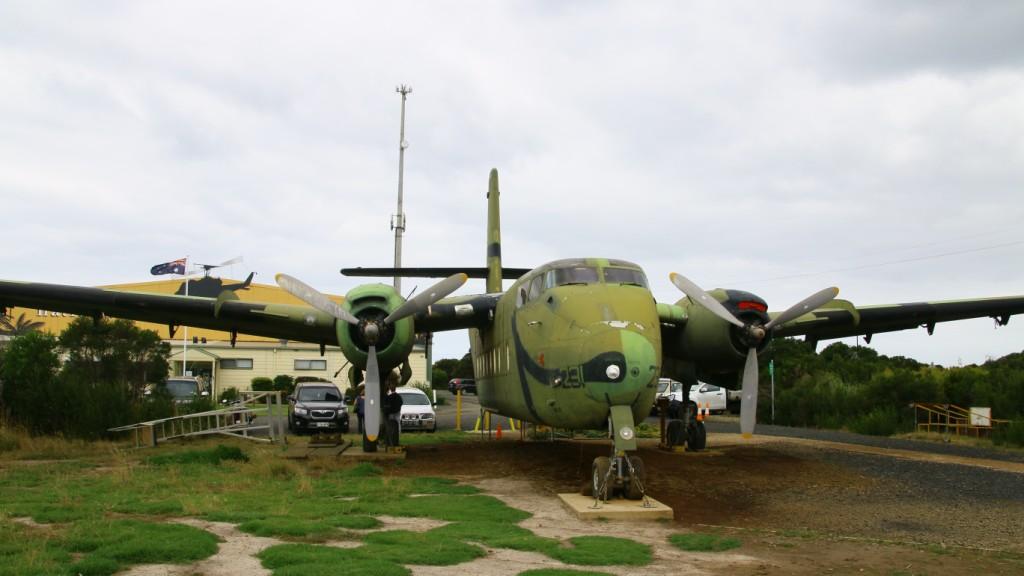
Caribou A4-231,
This aircraft joined the RAAF in 1965 and served with 38 Sqn at
Richmond, then Amberley then Townsville. It was discharged in 2009 and
flown to Oakey where it sat for 6 years until being acquired by the
Museum. It’s now in dire need of some TLC.
The Museum also got A4-204 which
is in bits out the back, looks to being used as a Christmas tree.
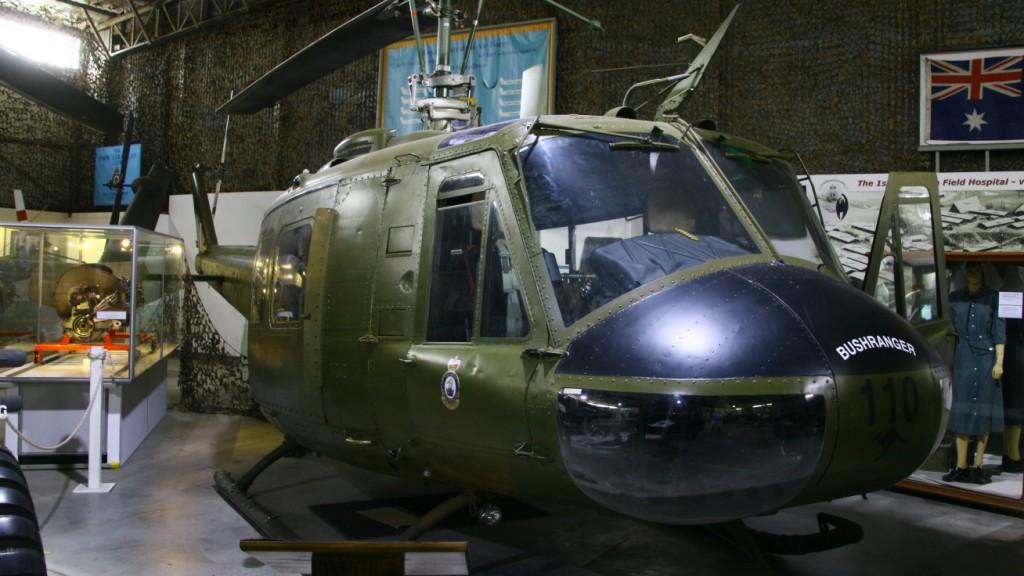
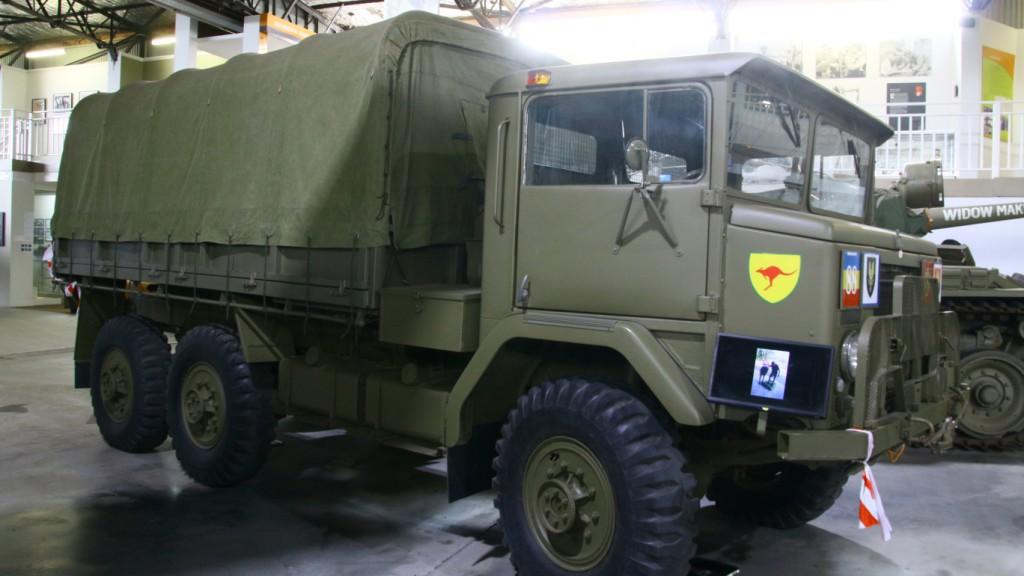
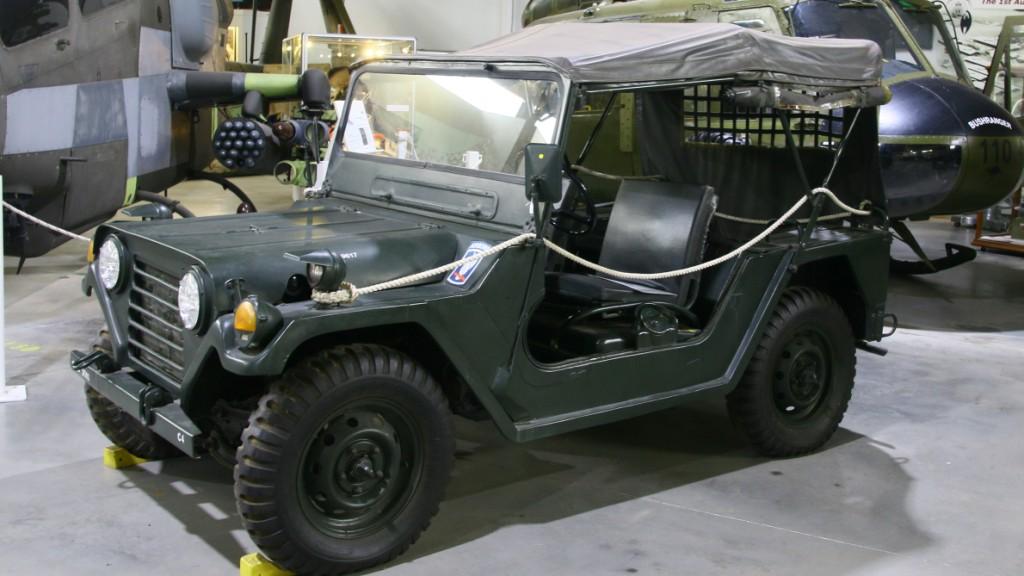
Ford M151 Jeep.
This little vehicle, which is an improved version of the original
WW2 jeep, was built by the Ford Motor company and is distinguishable by
its horizontal slotted grill. The Willys company, which also
manufactured Jeeps, had a trademark on the traditional seven slot
vertical grill so Ford developed their own. Production of this model
commenced in 1960 and stopped in 1982 when more than 100,000 of these
great little vehicles had been built. They were powered by a 2.3 litre
inline 4 cylinder OHV petrol engine. In 1988, due to demand, production
was restarted and today the little vehicle is still in service in many
countries around the world. They are fitted with a four speed manual
gear box which drives the rear wheels. Four wheel drive can be selected
when needed however, there is no reduction box.
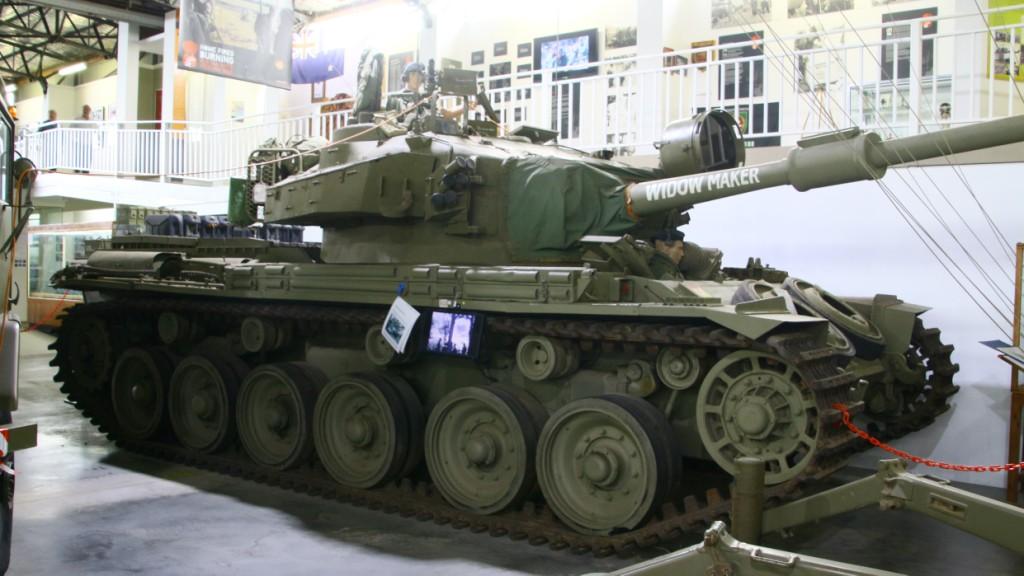
Centurion Tank.
Although Vietnam was not a tank war, the Australian Centurion was
a very handy machine and proved its worth many times over. In 1965,
Australia sent an infantry battalion to Vietnam, increasing its size to
a full brigade in 1966. Australian M113 APC’s also participated in the
fighting, but their poor firepower and thin armour did not allow the
Australians to use them in the thickest fighting. In September 1967, the
Australian government decided they would reinforce the Australian forces
in Vietnam with a Centurion tank unit. This caused a wave of criticism,
as the military “experts” proclaimed that in the thick jungle terrain of
Vietnam, the tanks would be all but useless and they would become mobile
pillboxes at best. Before they were sent to Vietnam, they were modified
by the 4th Base Workshops in Bandiana, Vic.
9 Centurions were loaded aboard the Jeparit and
reached Vung Tau in Feb 1968. After a short period of training with
infantry, they participated in their first combat operation in March
1968, called “Pinaroo”. Its task was to destroy strong Vietcong units,
occupying the badly accessible Long Hai mountain range, south from the
main Australian forces base in Nui Dat. During the three week operation,
the tanks proved themselves to be very good at destroying enemy
positions. These positions were very well placed and only direct tank
gun fire could destroy them at the distance of several hundred meters.
The remaining positions that weren’t blasted away were crushed under the
tracks of the 50 ton beasts.
In September 1968, the number of Centurions in
Vietnam was increased to 28. The tanks prowled the jungle with minimal
speeds, sometimes they advanced as little as 500 meters per hour due to
the thick flora – this caused extreme fuel consumption, which jumped to
12 gallons per mile (2,800 litres per 100 km), which is why aircraft had
to bring in huge amounts of fuel in giant rubber 4,500 litre bladders.
Despite the initial Australian worries, the
Centurions have proved themselves to be very useful on the battlefield
of Vietnam and they also turned out to be very resilient when taking
damage, withstanding multiple shell hits. The Australian Centurions
fought in Vietnam until September 1971, when the Australian units were
pulled out of the country. They influenced the fighting in the Phuoc Tuy
province a lot and the Australian “diggers” remember them fondly to this
day.
They carried a crew of four, a Commander, Gunner,
Loader and driver and were powered by a Rolls Royce V12 Meteor petrol
engine with a top speed of about 34 kph. They had a 5 speed crash
gear-box and drum brakes. Armament consisted of a twenty pounder main
gun and two machine guns.
In all, Australia had 131 Centurions which were all
retired in 1977.
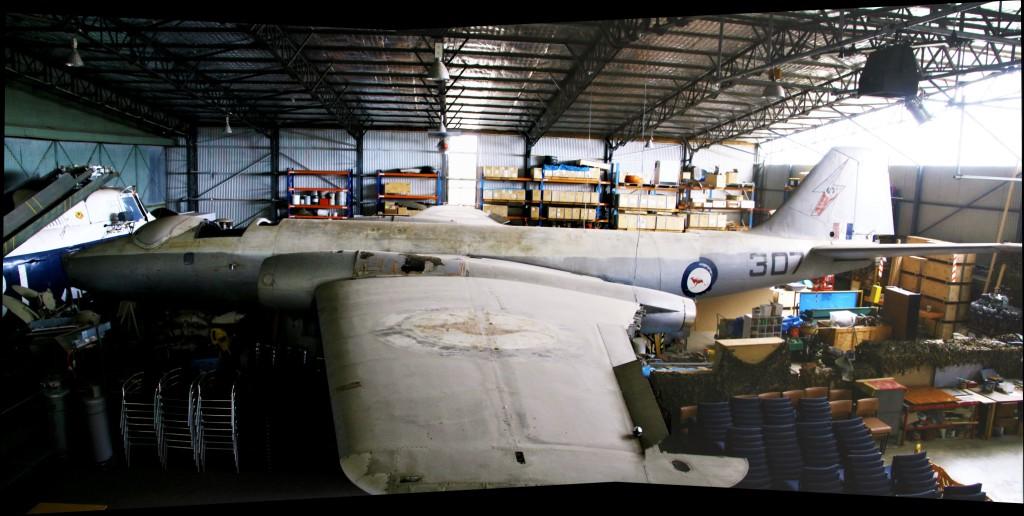
A84-307 Canberra.
This particular aircraft was originally meant for the RAF but in
1950 was allocated to the RAAF. This was the first Canberra to arrive in
Australia and arrived at 1AD at Laverton in August 1951. It was shortly
handed over to ARDU at Laverton and from there it spent time at
Amberley, Avalon and several postings overseas until it was retired in
1973. It is one of three aircraft brought out from the UK before
production started in Australia and is the world’s oldest surviving
Canberra. There is more info on the Canberra
HERE
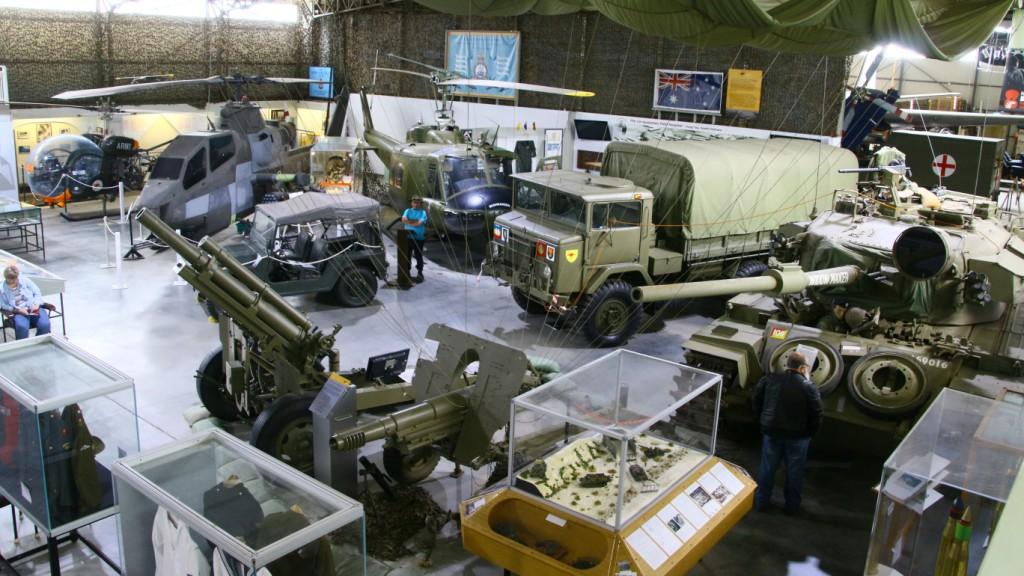
Part of the ground floor display in hangar one.

The Museum has a 20 minute holographic light and
sound show which you can watch in their darkened theatrette. This show
gives an overview or Australia’s involvement in Vietnam, explains why we
were there, describes the conditions in country and the deplorable
treatment personnel received on their return to Australia. Definitely
well worth the time to watch it.
The only
reason I would take up walking is so that I could hear heavy
breathing again
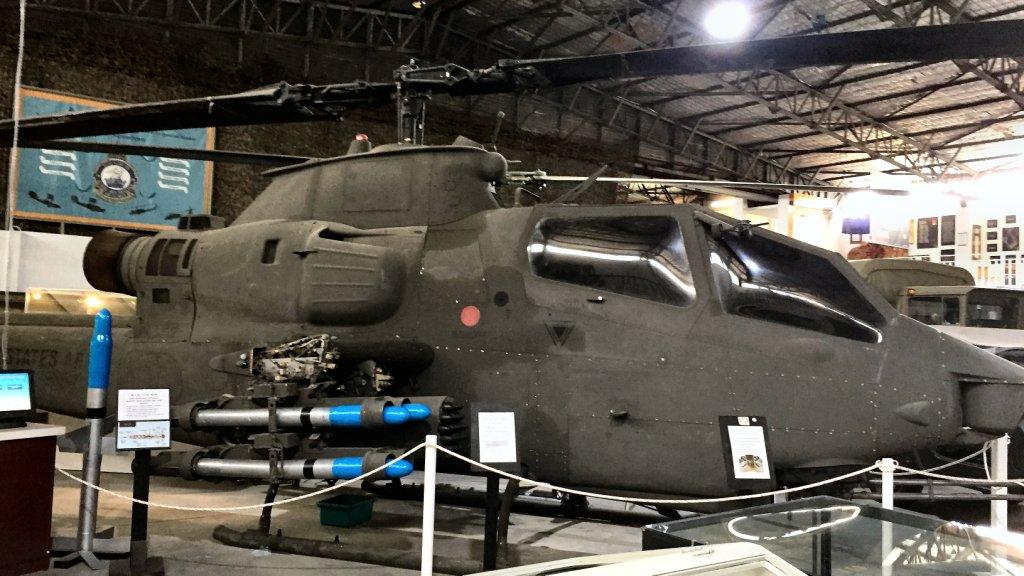
Bell AH-IG Cobra attack helicopter.
The Cobra was a heavily armed ground attack helicopter used
by the U.S. Army in Vietnam to support Australian and U.S. Army ground
operations. In addition to the M197 three barrelled 20mm Gatling gun, it
carried eight anti-armour missiles and forty eight 2.75mm unguided air
to ground rockets. This particular aircraft served in Vietnam from 1968
until 1971 and was damaged twice in combat. It is currently finished in
a low visibility all-over mid green which includes the full US Army
insignia and carries the Serial No. 0-15092.
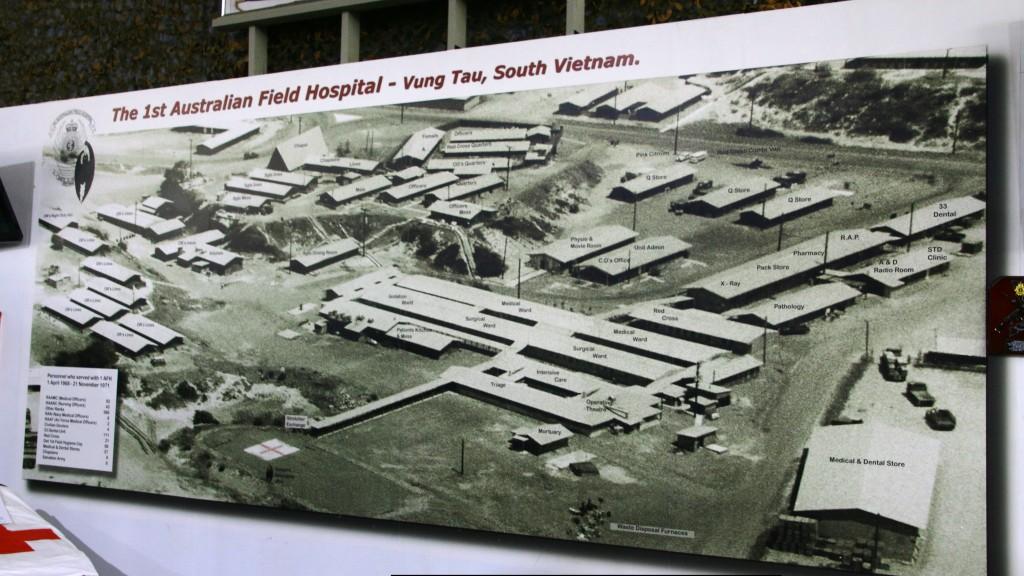
Back Beach Hospital, or 1 (Aust) Field Hospital to
give it its official name, was raised at Vung Tau on the 1st
April 1968 and withdrawn from Vietnam on the 21st November,
1971. The hospital site was first occupied by 2 Field Ambulance (1966 -
67) followed by 8 Field Ambulance (1967 - 68). When the hospital was
raised, in 1968, 8 Field Ambulance moved to Nui Dat where it remained
until 1972.
The radio call-sign “Vampire” was used by all three
medical units – someone obviously had a sense of humour.
In October 1969 the American 36 Evacuation
Hospital, which was on the base at Vung Tau, closed, requiring the
surgical facilities of the Hospital to cope with all casualties,
including severe injuries previously treated by the US facility. The
high standard of para-medical services provided by the hospital led to a
remarkable statistic, 98.5% of Australian soldiers who reached the
hospital alive survived their injuries or illness.
Personnel who served with the Hospital April 1968 –
November 1971:
|
RAAMC (Medical Officers |
82 |
|
RAANC (Nursing Officers) |
43 |
|
Other ranks |
586 |
|
RAN
(Navy Medical Officers) |
8 |
|
RAAF (RAAF Medical Officers) |
2 |
|
Civilian doctors |
4 |
|
33 Dental unit |
111 |
|
Red Cross |
21 |
|
Det 1st Field Hygiene Coy |
58 |
|
Medical & Dental stores |
37 |
|
Chaplains |
9 |
|
Salvation Army |
9 |
The Museum is well worth a visit, if you’re in the
vicinity, give it a go. The
Museum is open every day from 10.00am to 5.00pm, except for Good Friday,
Christmas Eve, Christmas Day, Boxing Day and New Year’s Day.
Admission costs are:
|
Adults |
$15 |
|
Child (5-15 years) |
$10 |
|
Children under 5 |
Free |
|
Family (2 adults, 3 children) |
$40 |
|
Seniors, Aged Pensioners, Vietnam Veterans |
$12 |
|
Pre-booked groups |
$10 per person |
|
Pre-booked school groups |
$10 per student |
In mid-2013 the National
Vietnam Veterans Museum Limited Board identified the need to develop a
long term Master Plan for the Museum and in September, 2013 a study was
commissioned.
The Master Plan was adopted
by the Board in 2014.
An integral part of the
Master Plan was titled, the “New Building Strategic Pathway” recognising
the fact that the Museum had run out of room. The strategy focussed on
identifying land in close proximity to the existing site upon which to
construct a purpose built, new Museum.
In October 2019 one hundred acres of land on the north eastern corner of the intersection of Phillip Island Road and Veterans Drive was purchased enabled by a $5 million Federal Government grant. Consultants were appointed to develop a Business Case which the Museum Board could present to, in the first instance, the Victorian State Government to procure additional funding. Work is now underway to determine the best time to approach the State Government. This decision has been severely impacted by the recent Victorian bushfires.
It is certainly an exciting
time for the National Vietnam Veterans Museum Limited”
I have to walk
early in the morning, before my brain figures out what I'm doing

Motorsport has been synonymous with Phillip Island
since 1928, when British driver A.C.R. White raced his Austin 7 to
victory in the very first Australian Grand Prix, held for cars on a 6.5
mile open road course. The Grand Prix was held annually until 1935, but
by then motorcycle racing had taken hold, with events held on a 12 mile
unsealed public road course until 1941, when excessive corner dust
finished racing.
However, the appetite for competition had been
whetted and plans for a permanent circuit were laid down in 1952 with
the formation of the Phillip Island Auto Racing Club (PIARC). Three
hundred acres of land is purchased by the PIARC for £6,000 ($12,000).
The new circuit opened in March 1956 with a car race but later that year
motorcycling returned to Phillip Island.
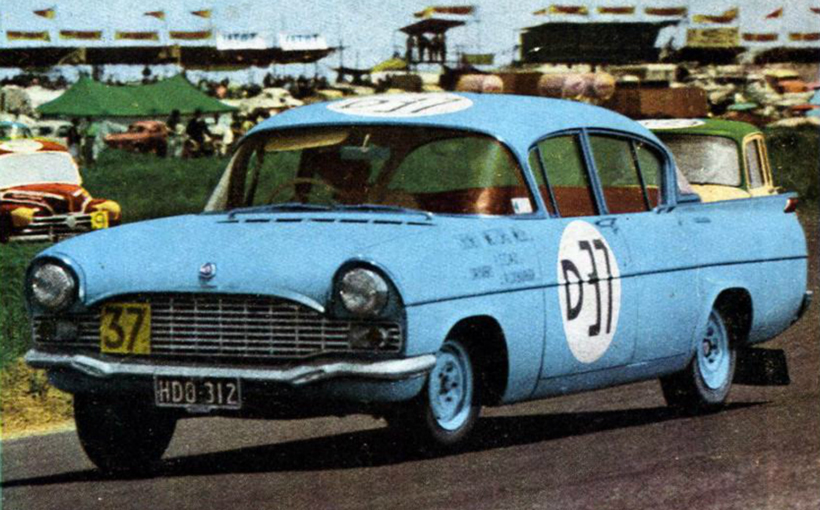 driving a Vauxhall Cresta. The
following year, Bob Jane and Harry Firth won in a Mercedes-Benz 220E,
while the 1962 race fell to them again, this time in a Ford Falcon.
However the constant pounding from the big touring cars caused the
breakup of the track surface and after the third edition, the race
switched to Bathurst in 1963, forcing temporary closure.
driving a Vauxhall Cresta. The
following year, Bob Jane and Harry Firth won in a Mercedes-Benz 220E,
while the 1962 race fell to them again, this time in a Ford Falcon.
However the constant pounding from the big touring cars caused the
breakup of the track surface and after the third edition, the race
switched to Bathurst in 1963, forcing temporary closure.
However it was not all bad news for Phillip Island,
as the ownership changed hands in 1962, when the track was purchased by
former racer Len Lukey, who joined with PIARC in a rebuilding programme.
Racing returned to the circuit in 1967 and another golden era seemed to
beckon. Unfortunately, Lukey passed away in 1978, leaving the circuit to
fall once again into disrepair with only sporadic meetings held, and the
land essentially just being farmed by its owners.
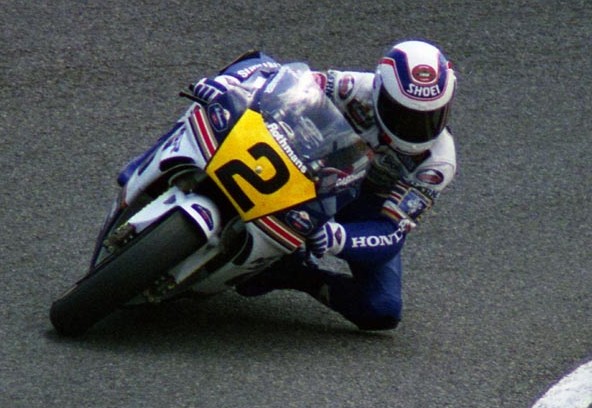 to the international motorcycle scene, winning the 500cc world
championship in 1987. On the back of the euphoria surrounding that
triumph, Australia scored a Grand Prix, with engineer and promoter Bob
Barnard and his Barfield company arranging to run it at The Island. Half
a kilometre was cut from the track, leaving it at 4.445 kilometres, as
the then vast sum of A$5 million was spent upgrading it. Gardner,
already a national icon, captured his country's imagination with two
rides in 1989 and '90 that are recalled among the greatest moments in
Australia's illustrious sporting history. Disaster struck again in the
1990s though. The decision to ban tobacco and alcohol advertising by the
Victoria State Government would make 1990 the last GP event at Phillip
Island for seven years, however, the 500cc race would prove to be the
most thrilling of the year with Wayne Gardner holding off a determined
Mick Doohan to win by less than a second.
to the international motorcycle scene, winning the 500cc world
championship in 1987. On the back of the euphoria surrounding that
triumph, Australia scored a Grand Prix, with engineer and promoter Bob
Barnard and his Barfield company arranging to run it at The Island. Half
a kilometre was cut from the track, leaving it at 4.445 kilometres, as
the then vast sum of A$5 million was spent upgrading it. Gardner,
already a national icon, captured his country's imagination with two
rides in 1989 and '90 that are recalled among the greatest moments in
Australia's illustrious sporting history. Disaster struck again in the
1990s though. The decision to ban tobacco and alcohol advertising by the
Victoria State Government would make 1990 the last GP event at Phillip
Island for seven years, however, the 500cc race would prove to be the
most thrilling of the year with Wayne Gardner holding off a determined
Mick Doohan to win by less than a second.
The Victorian Government had merely been early
adopters of laws which would ultimately see the end of tobacco
sponsorship in motor racing, so by 1997 the Grand Prix was restored to
Phillip Island once more. Doohan was on course for victory in the year
of its return before an uncharacteristic tumble but made amends the next
year in probably the most emotional of all the victories which netted
him five world titles.
The circuit was brought into new ownership in 2004,
when it was sold to Linfox Property Group Pty Ltd for an undisclosed
figure. Under the new ownership, a $2 million safety upgrade was carried
out, primarily to improve safety for motorcycle racing. Major works were
carried out on the pit exit and entry, safety barriers were moved
further back from the track in several places and new and bigger
run-offs and gravel traps were installed. Further investment was made at
the end of the 2012 season when the entire track was resurfaced in a $3
million upgrade.
The setting for the circuit is fabulous, right on
the coast with plenty of hilly spots to sit and watch the races. The day
we were there they were holding an event, motorcycles were hurtling
around the circuit at a million miles an hour so were restricted to
where we could go without paying the admission price, so we had a quick
look and then moved on.
Every time I
hear the dirty word 'exercise', I wash my mouth out with chocolate.
Phillip Island’s iconic Penguin Parade is one of
Australia's most popular tourist attractions and in July 2019 it opened
the doors to an exciting and visually breathtaking new visitor centre.
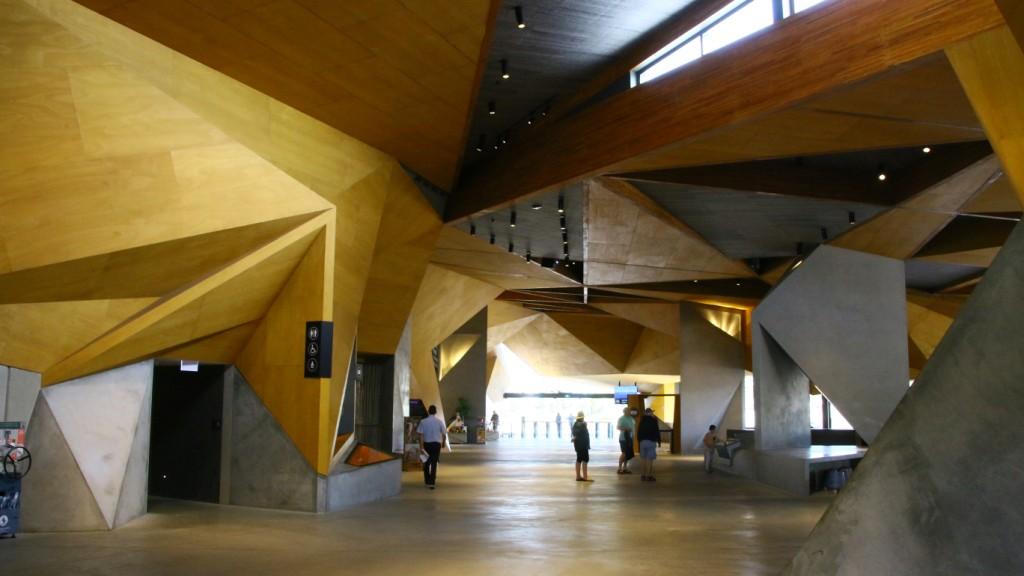
Low carbon building materials have been used
throughout the centre’s construction, including Victorian Ash hardwood
for the impressive laminated beams.
Its spectacular architectural design was
acknowledged internationally, having been announced as a winner at the
2019 International Architecture Awards, out of a field of over 380
submissions from 41 countries.
I do have
flabby thighs, but fortunately my stomach covers them.
Just a short walk from the Penguin centre was the “Wild” sand
sculpture exhibition. This exhibition opened on Boxing Day 2019 and is
open from 10.00am until 6.00pm every day. Those amazingly talented
artists have used over 700 tonnes of “Brickies Sand” to produce
intricate sculptures which are then given a waterproof coating to
protect them from heavy rain.
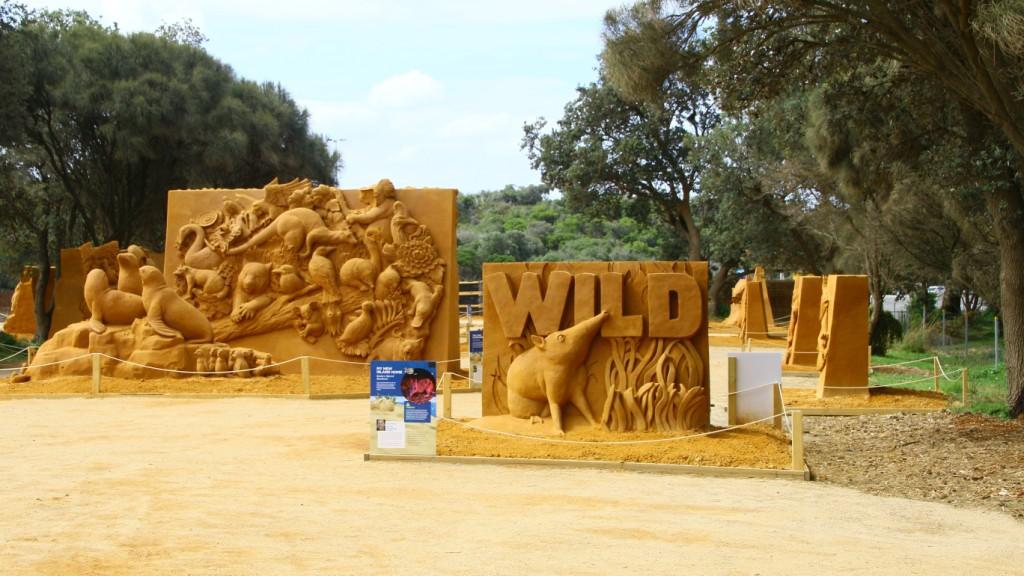
“Brickies Sand” is a type of sand that is used most commonly in the
bricklaying and masonry industry. It has a higher level of clay content
which allows it to become “stickier”. The artists moved to the Gold
Coast and produced their wonderful sculptures along the waterfront, in
front of Maccas, from the 14th Feb to the 1st
March 2020.
The
advantage of exercising every day is so when you die, they'll say,
'Well, he
looks good doesn't he.'
From the Penguin Centre is was just a short drive
to the western end of the Island to “The Nobbies” from where, if you’re
lucky, you can see Australian Fur Seals on Seal Rocks.
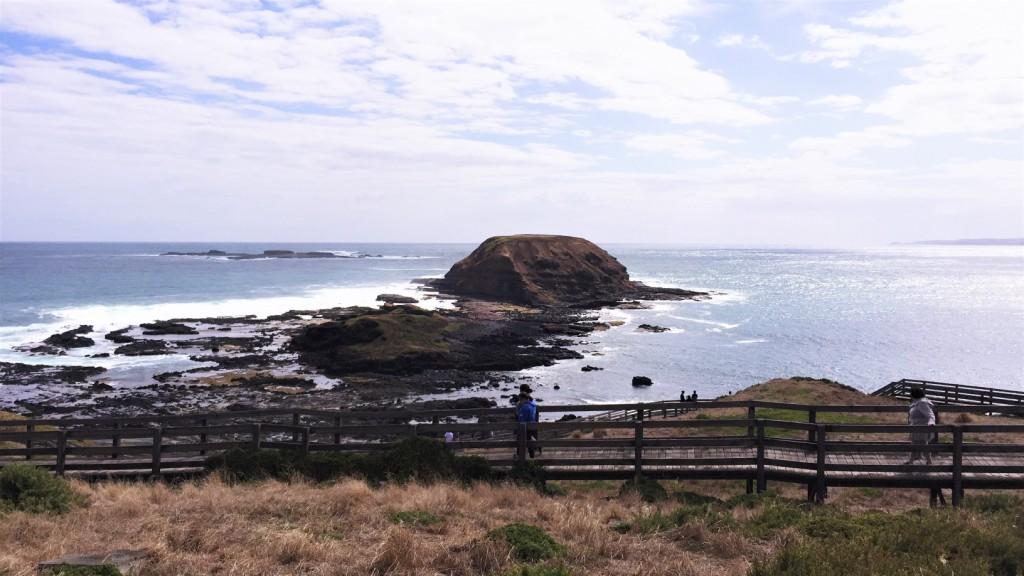
Australian fur seals were over-harvested during the
1800s and have taken a long time to recover. During most of the 1900s
less than 10,000 pups were born annually but numbers started to increase
during the 1980s and 1990s. A species-wide estimate of live pups in 2002
recorded a near-doubling of annual pup production since the 1980s.
Live pup numbers increased again in 2007 when it
was estimated the total number of seals was in the vicinity of 120,000.
Seals live on a diet of various species of fish and also squid which
they forage for in Bass Strait.
We didn’t see a one!!
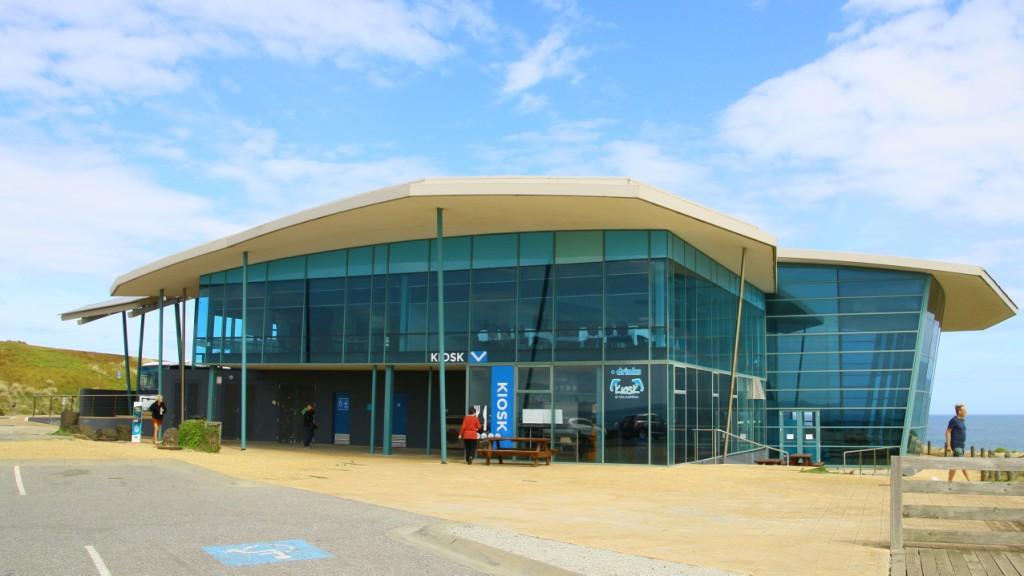
There is a kiosk on the point but we thought it a
bit tired.
If you are
going to try cross-country skiing, start with a small country.
Continuing with our clockwise circuit brought us to Cowes which is the
main settlement on Phillip Island and which sits on the northern side of
the Island. It has a population of 4,850 people, big enough to support
both a Woolies and Coles stores as well as an IGA. It has a lovely main
street which drops down to the water.
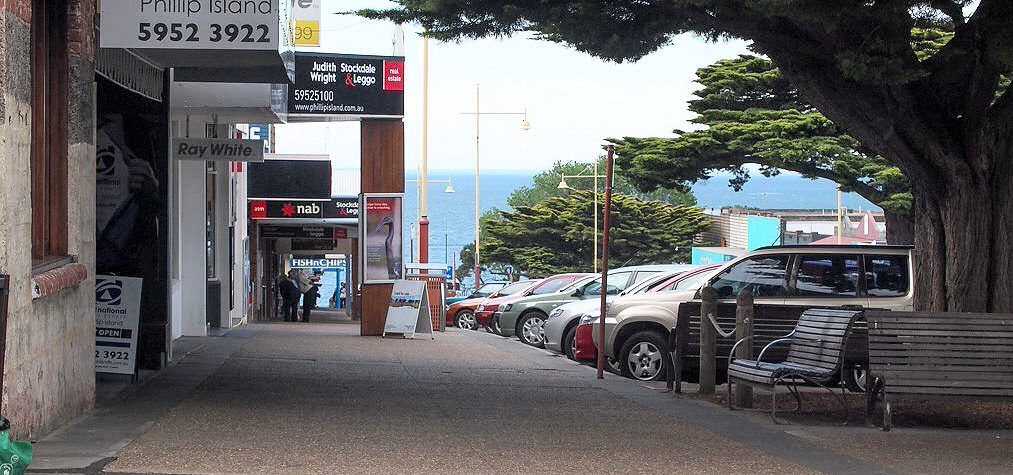
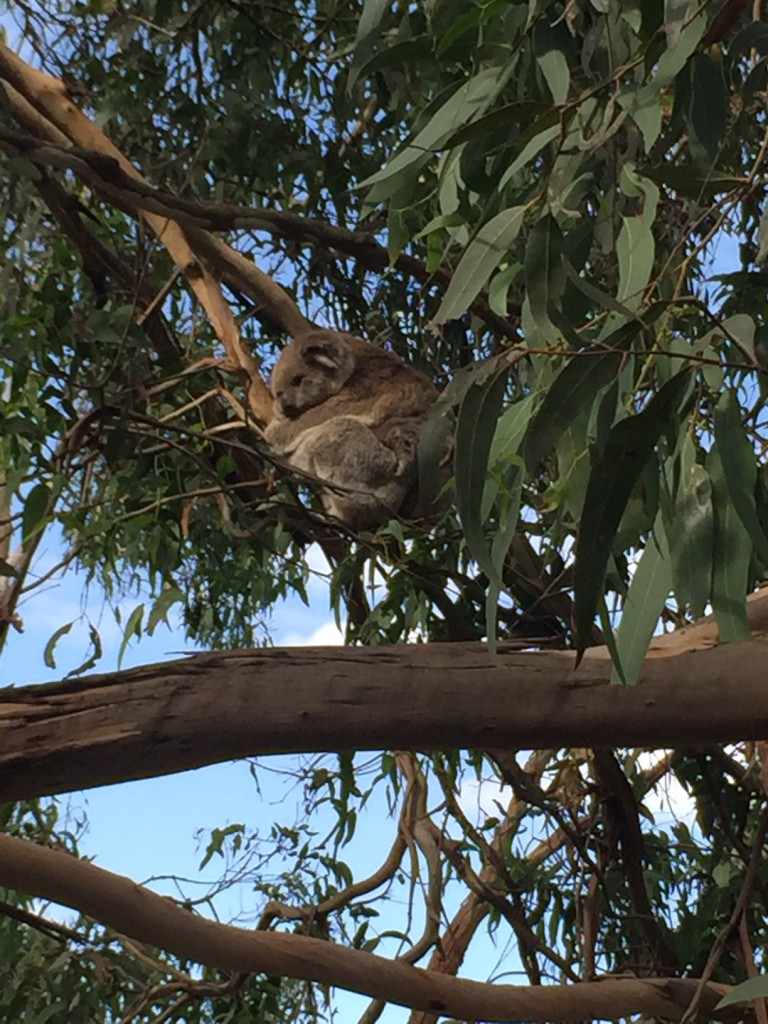
If you’ve ever been koala looking you’ll know that,
apart from dropping on the occasional unsuspecting tourist, they don’t do a lot. They
just curl up in a tree and ignore the world.
Still, it’s a bit of a thrill to see them, if you
live in a city apart from going to a zoo, you’re never likely to see one
but here you can see them ‘in the wild’.
Unlike a zoo, the Koala Reserve is really unique as
visitors get the chance to see them in their natural habitat, living as
they would in the wild. The Reserve has been essential in saving Phillip
Island’s koala population in its natural bush environment.
Another spectacular area is the woodland walk. You wander through natural bush, amongst hundreds of different species of Australian wildlife, including wallabies, possums, echidnas and snakes.
The Koala Reserve also features a visitor
interpretation centre with gift shop and educational displays, which
visitors will find extremely fascinating and informative. The Koala
Reserve is part of the Phillip Island Nature Parks.
From there is was time to cross the bridge back
onto the mainland and the return trip back to Melbourne. When in
Melbourne, set aside a day and do the tour of Phillip Island, it’s well
worth it.
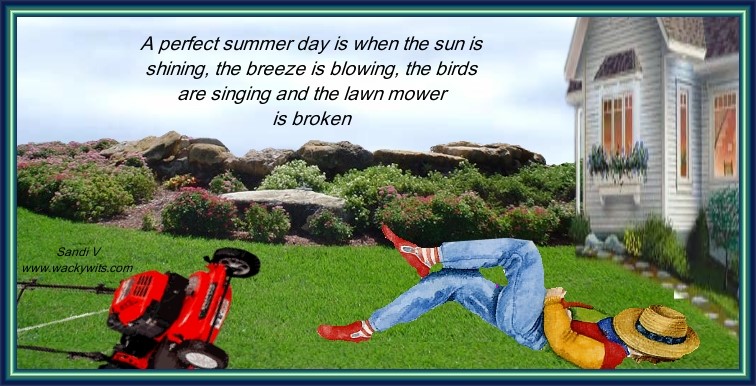
Back Go to page: 1 2 3 4 5 6 7 8 9 10 11 12 13 14 15 16 17 18 19 20 Forward
